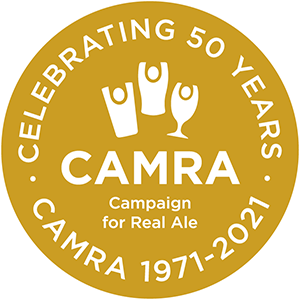Rose Villa Tavern
West Midlands - Birmingham
Three star - A pub interior of outstanding national historic importance
Listed Status: II
172 Warstone LaneBirmingham, Hockley
B18 6JW
Tel: (0121) 729 9851
Email: info@rosevillatavern.co.uk
Real Ale: Yes
Lunchtime Meals: Yes
Evening Meals: Yes
Nearby Station: Jewellery Quarter
Station Distance: 250m
Public Transport: Near Railway Station (Jewellery Quarter) and Bus Stop
Bus: Yes
View on: Whatpub
The most impressive part is the rear snug accessed from the right hand passageway via an impressive ceramic archway of buff tiles and faience or from the rear left hand room through a lobby with tiled walls of mainly light green and some buff ones and via a similar but smaller archway. This small room has floor to ceiling tiled walls topped by a frieze of urns and flowers and a superb ceramic inglenook fireplace featuring tiles and faience including a deep relief arch incorporating a ceramic head. Over the fireplace is a narrow tiled Arcadian scene featuring three ladies and more mainly light green and some buff tiles around it. The room is lit by a skylight with colourful leaded panel, the ladies toilet door has more leaded panels, but the bar counter here is modern.
From the right hand door on the Warstone Lane side double inner doors lead into an impressive passage with terrazzo floor, walls covered in Carters tiles to picture frame height of mainly green topped by a frieze of urns and flowers. Just before the staircase high up is an impressive ceramic archway of buff tiles and faience. A dado of tiled walls flank the staircase with a frieze above. The decoration varies in different areas with rich swags in the corridor and staircase area. On the first floor is a function room with an old wood surround fireplace and more leaded windows, but new bar fittings added.
On the front left of the passageway is a vestibule entrance with stained and leaded panels leading to the main bar. This has a terrazzo floor, original panelled bar counter which curves on the right hand side and the original island style bar back fitting with rich Classical detailing featuring four columns and capitals but some modern work. Note that above the back fitting the ceramic work on the ceiling includes four scroll shaped brackets. The whole room is covered in Carters tiles to picture frame / three-quarter height in mainly buff and shades of green all topped off with a green faience ledge having leaf symbols regularly spaced along it. On the Vyse Street end of the main bar are three painted panels depicting girls in rustic settings with multi-coloured tiled surrounds, there is another one near the vestibule entrance partially covered by a red telephone box and throughout the room are decorative narrow colourful tiled panels. The other great feature is the three notable exterior round-arched windows including designs depicting at the centre a purple galleon with brown and streaky pink sales riding a sea-green wave, flowing foliage and two bands of semi-circular strips of green and yellow, and blue and white chequers leaded panels.
On the Warstone Lane side is the former off-sales passage which is no longer in use and gaps have been made in the walls so that it is now possible to walk around the pub. This area also has tiled walls and two more tiled paintings but they are difficult to view as this area is used for storage. The Lounge at the rear right has a vestibule entrance with tiled walls; original fixed seating in the bay window, parquet floor, but the bar counter here is a modern addition.
 Pub Heritage
Pub Heritage 